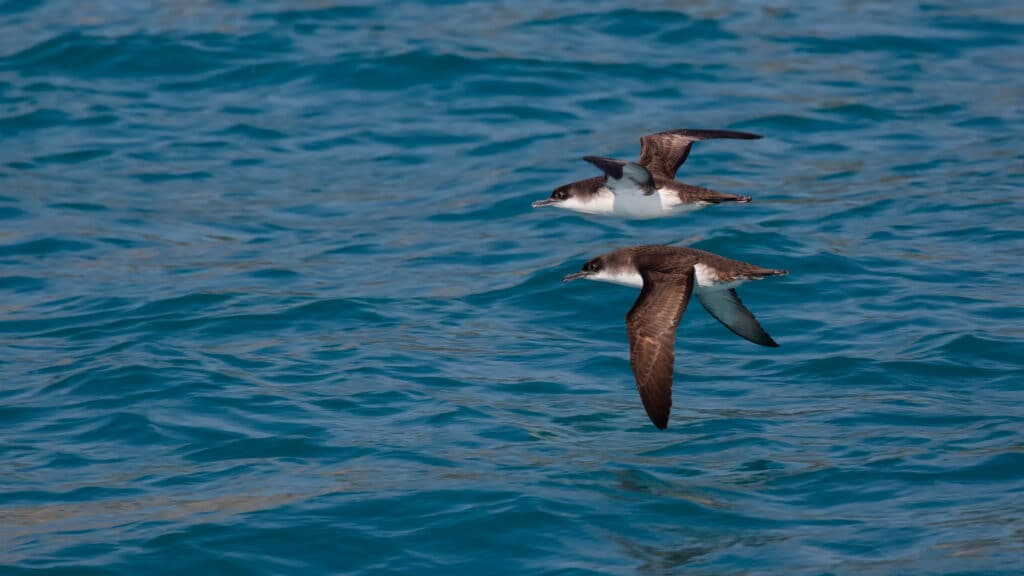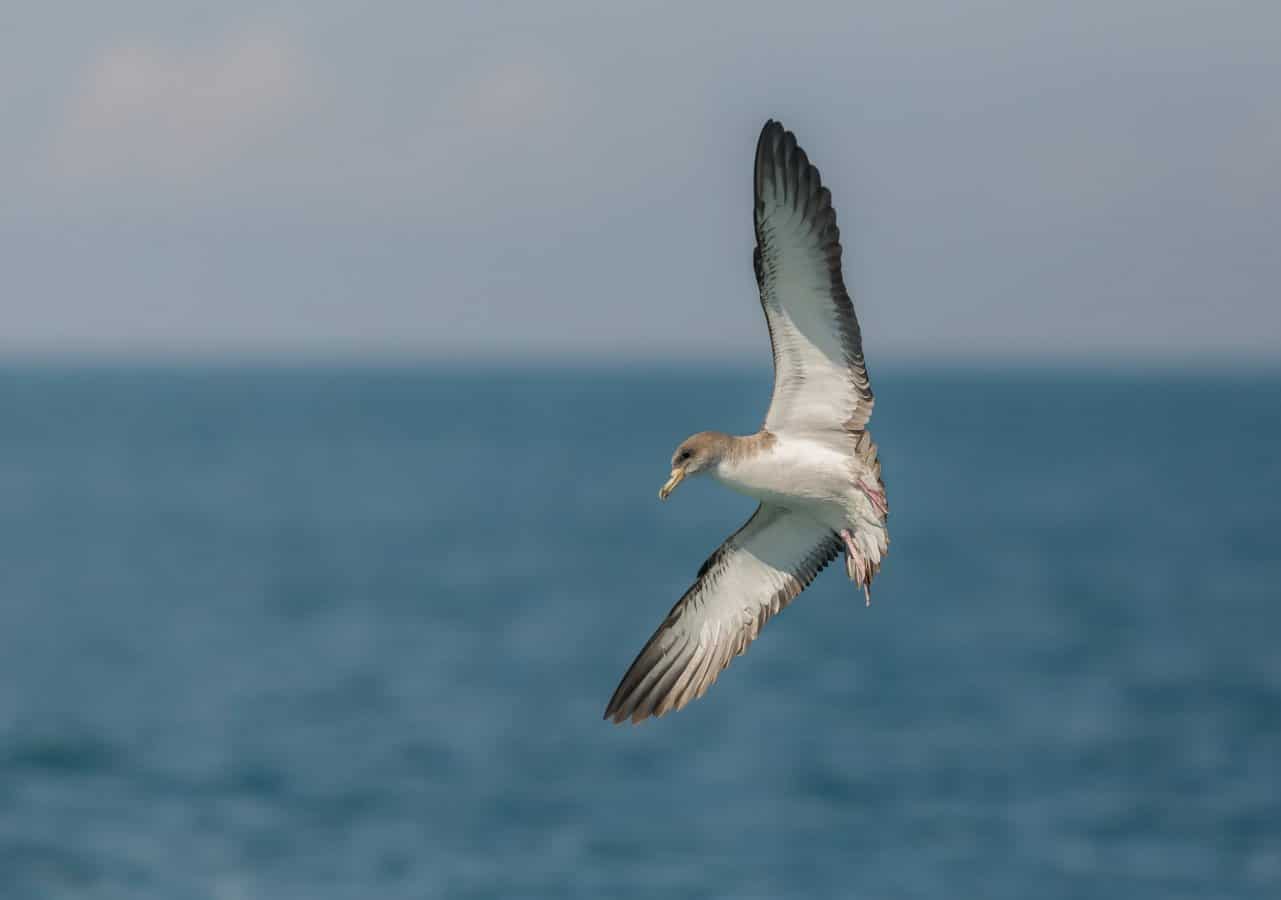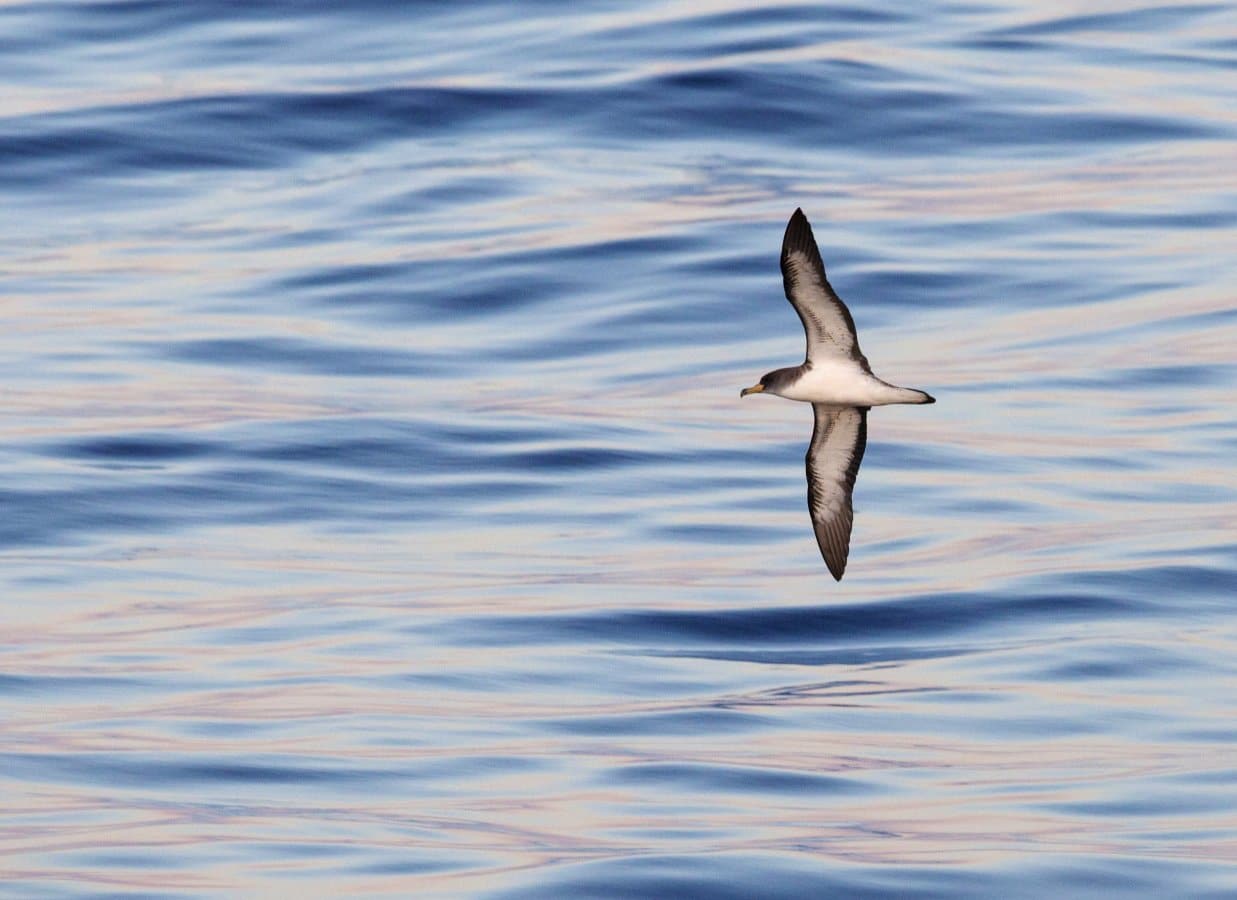Seabird of the month – Yelkouan Shearwater (Puffinus yelkouan)

Another month, another seabird.
by Antonio Vulcano
IUCN status
Common name
EN: Yelkouan Shearwater ESP: Pardela de Yelkouan (o mediterránea)
FR: Puffin yelkouan IT: Berta minore MT: Garnija) GR: Μύχος
European breeding population
23,500 – 40,900 pairs
Description
Wingspan: 76-89 cm
Life span: approximately 14 years
Distinct features: Yelkouan Shearwaters can be recognised by the contrast between their dark upper-parts and white under-parts. They have dark, thin bills with tube-shaped nostrils and an external growth at the start of it. When flying, they alternate between fast wingbeats and glides close to the water surface. They often gather in large flocks at sea.
Main prey: They prey on small fish and squid caught by plunging into the sea and diving as deep as 30m. They are attracted to fishing boats where they feed on offal.
Breeding
Yelkouan Shearwaters are early breeders, returning to their colonies in the winter months. Each pair lays one egg between the end of February and beginning of March and the parental duties are shared between the male and female. The chick fledges between June and July.
The breeding season of this seabird in Greece is shifted forward by at least one month compared to other Mediterranean breeding grounds.
Population distribution
This seabird breeds on islets and coastal cliffs all around the Mediterranean including Croatia, France, Greece, Italy, Malta, and Tunisia. Following the end of the reproductive period a large part of the population migrates to the Black Sea through the Aegean Sea, the Marmara Sea and Bosporus to winter and benefit from the rich fishing grounds there.
Main threats
- Bycatch
- Invasive alien species and introduced predators such as rats and feral cats
- Light pollution
- Habitat loss of breeding grounds due to human activity and coastal development
- Offshore energy developments
- Hunting & trapping
- Environmental pollution (including contaminants and toxic algal blooms)
BirdLife and Yelkouan Shearwaters
Many of our Partners work with this iconic species. Our Croatian Partner BIOM coordinates the LIFE Artina project in the Lastovo Archipelago and has shed light on the breeding grounds of the species, recording over 300 breeding pairs on six islands in 2020!
BirdLife Malta has had a long-lasting experience working with this species, coordinating three projects in a row aimed at the conservation of this seabird. Now, in true BirdLife fashion, they lead a 4th project together with BirdLife Partners from Greece, Spain, Portugal, and France to tackle the main threats on land and at sea for both the Yelkouan Shearwaters and its sister species, the Balearic Shearwater.
Lear more about this project here.
Interesting facts
A study performed in Malta on the foraging trip the bird goes on before laying the egg – the pre-laying exodus – shows the female foragers spent on average 13 days at sea and performed journeys of longer duration and greater distance than those undertaken by males.
You can have a glimpse of their secret life thanks to BirdLife Malta’ here:
Image credits: Yelkouan Shearwater – Puffinus yelkouan ©Ercan Uc
You might also be interested in:
 | Stichting BirdLife Europe gratefully acknowledges financial support from the European Commission. All content and opinions expressed on these pages are solely those of Stichting BirdLife Europe. The European Commission is not responsible for any use that may be made of the information it contains. |









